Overstable vs Understable: Learn the Difference
TOC
Table of Contents
Overstable vs Understable. No, these aren’t symptoms that the latest pharmaceutical is claiming to cure. These are, in fact, two of the most common terms describing how disc golf discs fly. Stick around and we’ll explain each one and even throw-in a bonus term, Stable, absolutely free!
RHBH Disclaimer: For this article, we will be referring to players throwing with their right hand for a backhand throw (RHBH). Flights described will be the opposite for left handed throwers. The same goes for right-handed forehand throws. Left-handed forehand throws fly similar to RHBH throws.
Definition Time: Overstable, Understable and … Stable?
Let’s start with a basic understanding of each:
Overstable means that a disc (when thrown flat) will hook (or Fade) hard to the left after an initial straight flight. With overstable discs, hyzer shots will hook sooner and anhyzer shots will Fade back to the left sooner. Not familiar with hyzer or anhyzer? The following graphic will help you out.
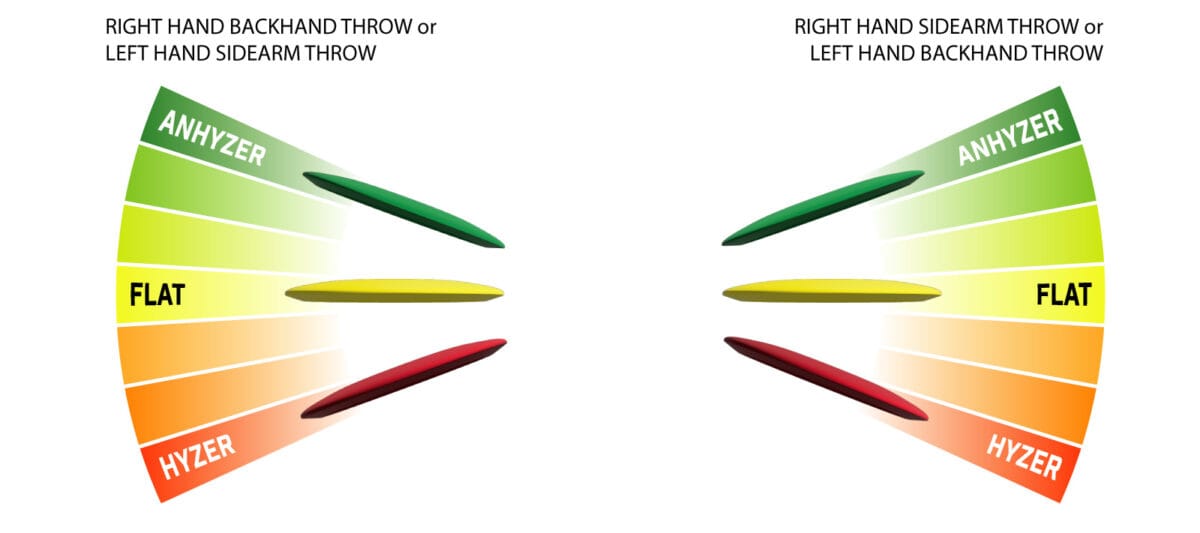
Back to more definitions…
Understable means that the disc (when thrown flat) will slice (or Turn over) to the right for a period before it eventually Fades back left to the ground. Hook or hyzer shots will smooth out and become less severe. And slice shots or anhyzers will Turn over (or flip) and never Fade back, or immediately Turn over and convert into a roller shot.
Keep in mind … that discs don’t just fall into either an overstable or understable category. There are various shades of each to take on the multitudes of disc golf shots. More on this later.
**Bonus Term: Stable. Often times when you discuss Overstable vs Understable, the term Stable gets lost in the mix. But, you don’t want to sleep on Stable. Why? Because stable discs are the best discs at maintaining the line they were thrown on. These neutral flying discs are also your straightest flyers.
Pro Tip:
Sometimes people get stable and overstable mixed up. They might be remarking on a disc’s heavy Fade and say, “Man, that disc is super Stable.” But, that’s not correct. What they should be saying is, “Man, that disc is super Overstable!”
Check out these lines!
By now you could probably use a visual aid to help differentiate between overstable, understable, and our new friend stable. The flight pattern of three Innova midrange discs (Roc3, Mako3, and Wombat3) will help illustrate the concept of stability nicely. Take it in for a second.
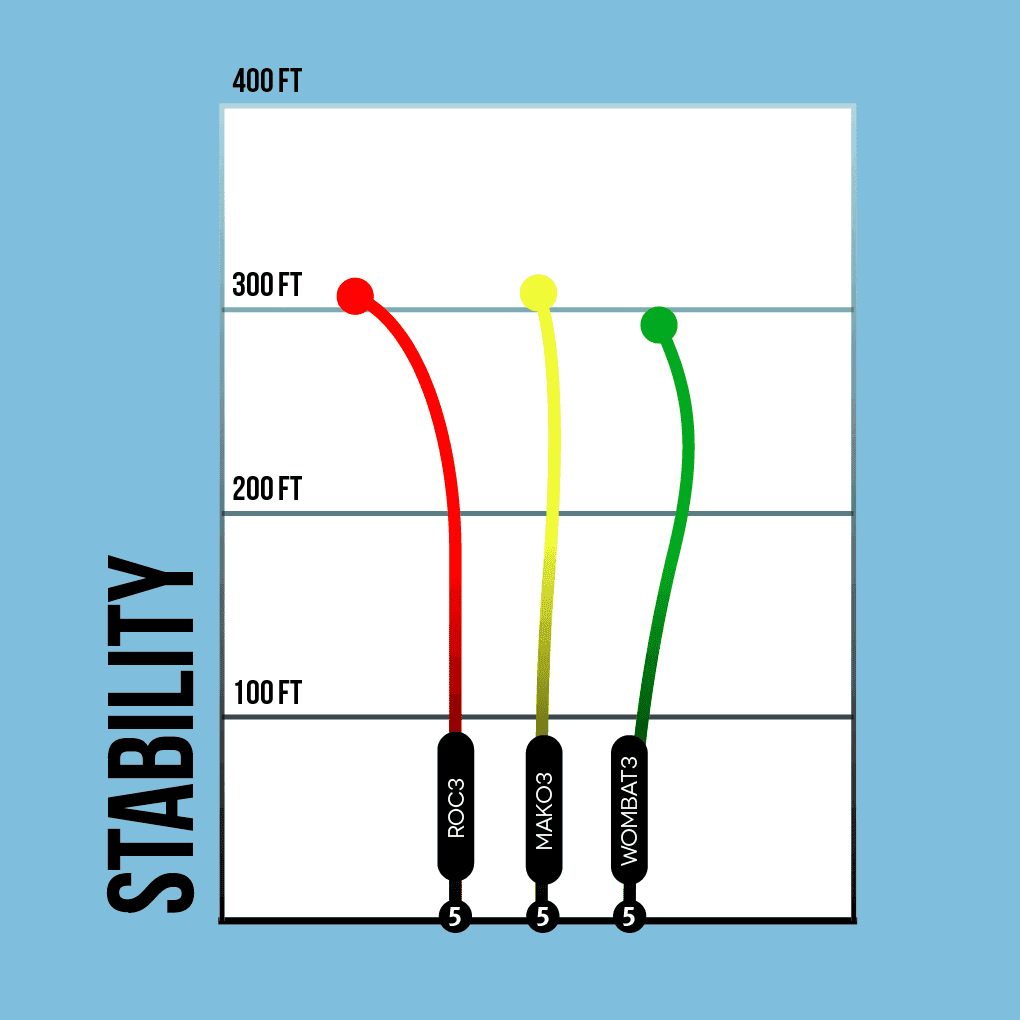
Look at the flight path of the Mako3 (yellow) thrown RHBH. See how it barely diverts from that straight line. It flies fairly stable. It holds the line. In green, the Wombat3 noticeably slices to the right, a sign of an understable flight. And the Roc3 (red) starts out straight, but hooks hard before flight’s end, the calling card of an overstable disc.
We picked these examples because they are fairly cut and dry. But as you’ll find out there’s a disc out there for just about every degree of stability. Why are there so many? Because there are so many types of disc golf shots and just as many scenarios to throw them in. But don’t get overwhelmed. Once you get the jest of stability, you’re able to predict what most discs will do.
So how do you do that? Read on dear reader.
Flight Numbers: Revealing Overstable vs Understable
When determining if a disc is overstable or understable, flight numbers can tell you a lot without ever throwing a disc. Two of them in particular, reveal the most. Turn & Fade.
Turn, baby, Turn
Turn (the third flight number) is the tendency of a disc to veer to the right (when thrown RHBH) during the midway point in flight or sooner. The more Turn a disc has the more understable it is considered. Turn flight number ratings will range from +1 (very resistant to Turn) to -5 (extremely likely to turnover).
Let’s look closer at understable discs: These discs usually have a high amount of Turn (-3 or more), noticeable Glide (the second flight number) and very little Fade (the fourth and final flight number).
(Look at our blog story, for a complete look at disc golf flight numbers. It’s really good. You should check it out.)
What kind of shots can Understable discs make?
- Long panning anhyzer shots that drift from left-to-right (RHBH) the entire flight path.
- Hyzer flip shots, where you throw the disc on a hyzer release angle. When done right, it will flip up to flat and fly really far before fading softly at the end.
- Rollers
- Overhand shots like scoobers and hammer (pancake) putts.
Popular Understable Discs
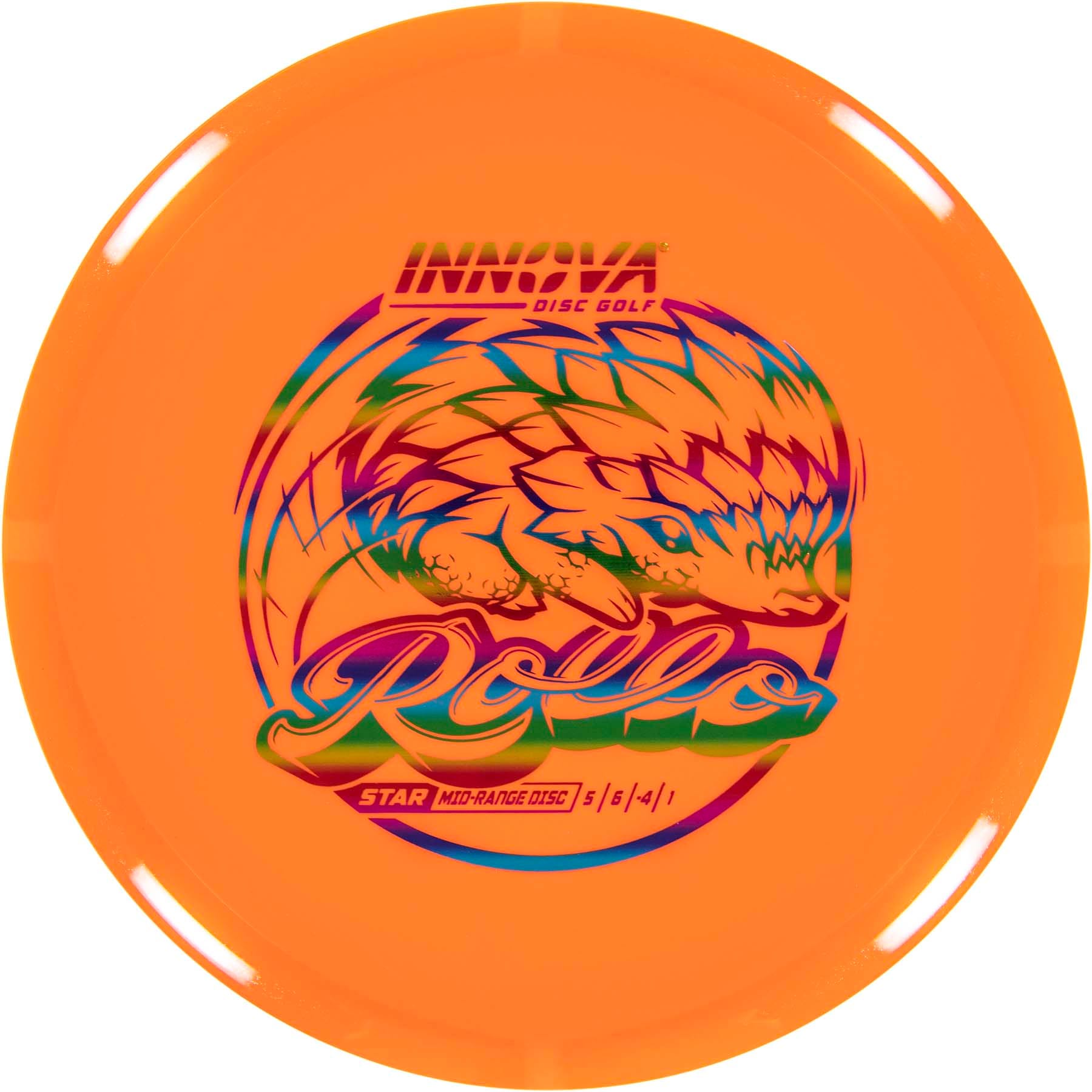
Innova Star Rollo
Talk about understable! The Rollo is the epitome of an understable mid range. With its easy handling and automatic turnover flight, even those with less power can perform sure fire rollers and automatic anhyzers right out of the box.
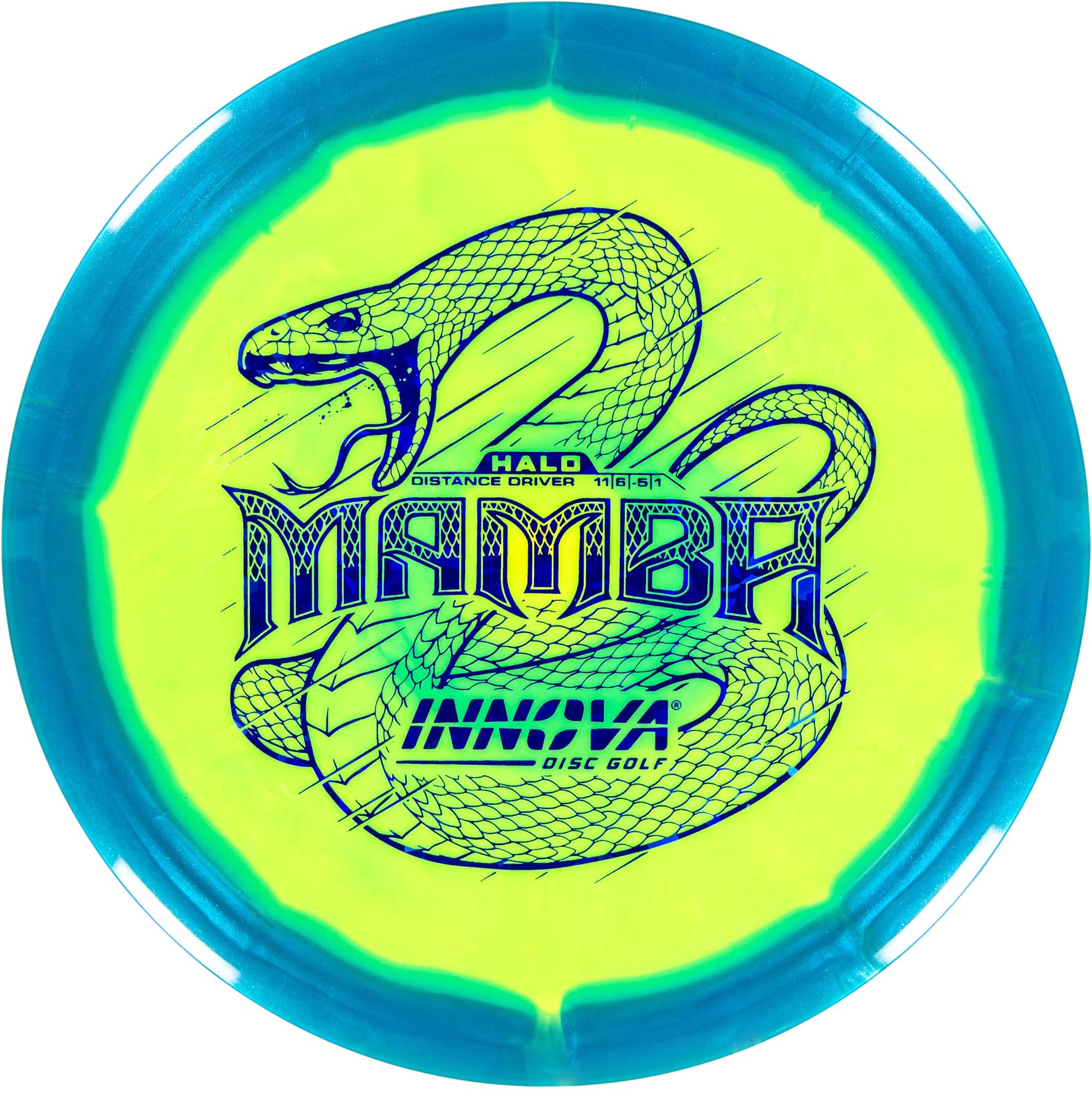
Innova Halo Star Mamba
One of the easiest drivers to turnover is without a doubt, the Mamba. For those with average power the Mamba produces effortless anhyzers and is an excellent roller option. It makes straight, long flights for those with less power.
Fade, baby, Fade
Fade. This is the other flight number that really has a say on stability. It is the degree a disc will hook left (RHBH) toward the ground once it starts decelerating at the end of its flight. Generally speaking, the more Fade a disc has the more overstable it is. Fade flight number ratings can range from 0 (straightest finish) to 5 (massive hook).
Let’s look closer at overstable discs: Overstable drivers typically have higher Speed and Fade Ratings (2 or more) and lower Glide. Overstable mid ranges and putt and approach discs have slower Speed, but have higher Fade and lower Glide numbers.
What kind of shots can overstable discs make?
- Headwind situations. Because they can fight the wind and hold their desired shot shape.
- Forehand shots. Overstable discs can best handle these throws that produce so much force, right-off-the-bat.
- Spike hyzers
- Skip shots around corners
- Forehand rollers
- Overhand shots like thumbers and tomahawks.
Popular Overstable Discs
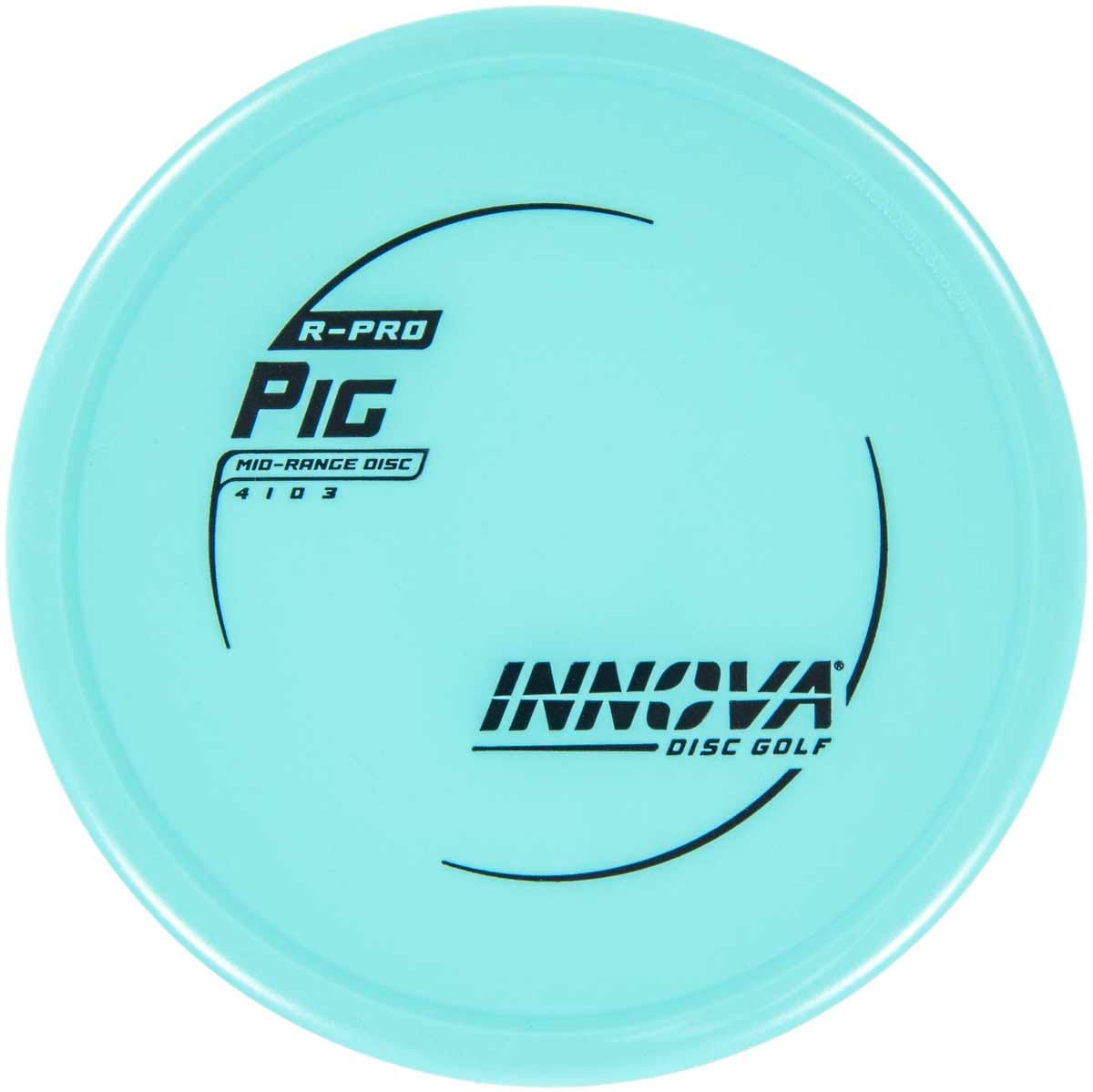
Innova R-Pro Pig
This piggie wants to Fade! The sturdy and sassy Pig is the overstable mid range disc (small diameter) that’s great for hyzer putting, sidearm approaches and backhand spikes.
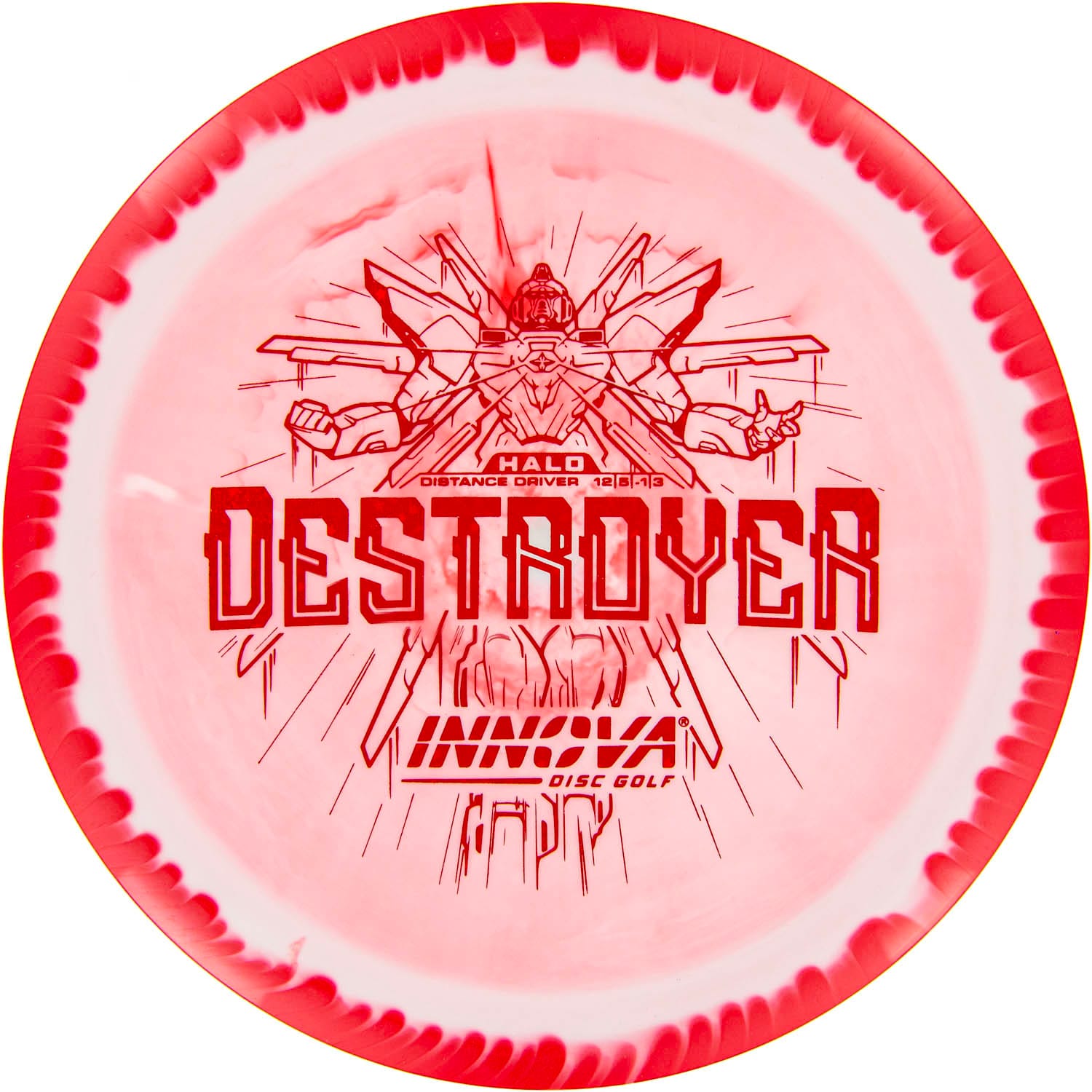
Innova Halo Star Destroyer
The Destroyer is a very fast, very overstable distance driver meant for advanced players. Thrown with the proper amount of power, the Destroyer disc flies straight followed by a slight Turn for incredible distance until its mighty Fade brings it back to the ground.
What about the other 2 Flight Numbers?
How Glide affects a disc’s stability: All discs have some sort of Glide. You have to, to stay airborne for any length of time. It’s not an absolute indicator of a disc’s stability but this much rings true:
- Those that have the lowest Glide tend to be overstable discs
- And those that have the highest often fall under the understable banner.
How Speed affects a disc’s stability
As you can guess, it takes significant arm Speed to throw a 13 or 14 Speed distance driver as designed. If you can’t get the disc up to Speed, the Fade is amplified, making the disc crash sooner to the ground.

Shoot! We slept on Stable. Not to worry. Here it is:
So, we’ve talked about understable and overstable discs, but what determines stable discs? Stable discs generally have middle of the road type flight numbers. Nothing too extreme. And that keeps these discs in line no matter what angle you put the disc on including a flat (straight) release, a hook (hyzer) release, or a slice (anhyzer) release. Stable discs are known for their versatility.
What kind of shots can Stable discs make?
- Straight
- Slow, drifting anhyzer
- Mild sharpshooting hyzer
- Technical forehands
Popular Stable Discs
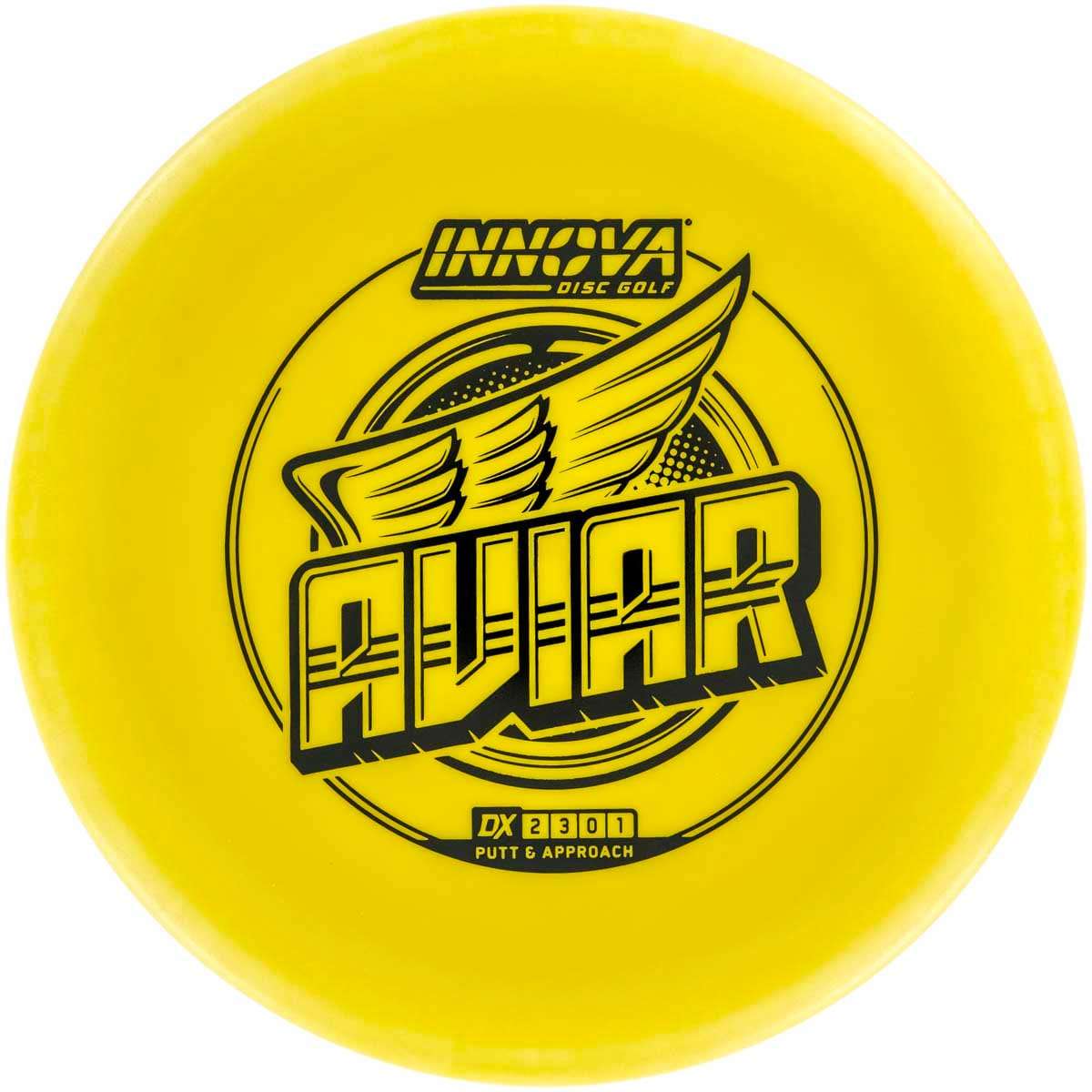
Innova DX Aviar
The Aviar supplies a trusted and true putt and approach flight that the world has grown accustomed to. When thrown at slow Speed for putting, it holds the line you put it on with neutral stability.
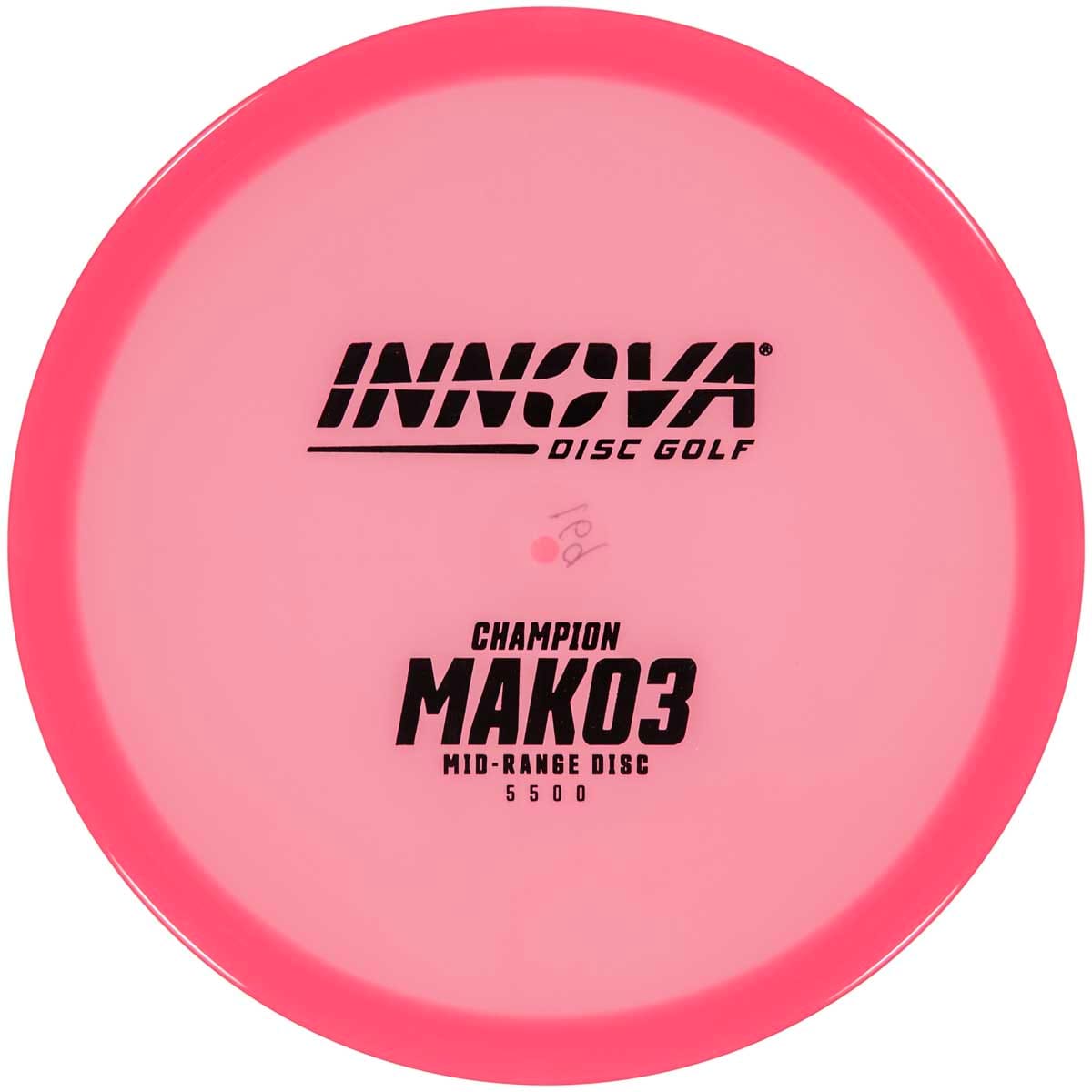
Innova Champion Mako3
The Mako3 is a neutral flying large diameter mid range disc, and it is perhaps the easiest disc to fly straight from the get-go. It’s got excellent Glide and minimal Fade at flight’s end.
Q: Which Stability is best for beginners? A: Understable
The best beginner discs are understable midrange discs or slower understable drivers. Less power is needed to make these disc fly on the line desired and there’s more room for error. Plus, they fly further.
But wait, there are more factors that determine stability.
I bet you thought we were done. Oh no, there’s so much more to stability than just the four flight numbers.
Plastic Type: It’s a known fact that some plastic types are more overstable than others. In terms of stability for Innova’s stock plastic (widely available), Champion is the most overstable followed by Halo Star, Star, GStar, XT, Pro, and finally DX.
Weight: Disc weight also plays a big role in flight and usability. The heavier the disc, the more overstable it is.
Does Rim Width Affect Stability? We asked the head guy himself, Innova Co-Founder and Disc Inventor Dave Dunipace and his reply was: “No.” It just means, “More Speed and more torque resistance.”
Plastic Condition: as discs are used or broken-in they become more understable. Premium plastics like Champion, Halo Star, Star, and GStar will do so much more gradually and therefore retain their original flight characteristics longer. DX, XT, R-Pro, KC Pro, beats in faster.
Thrower’s Skill / Power:
- Spin: Everyone will tell you spin equals more distance. And they’re correct. Without applying maximum spin, your drives peter-out to the ground prematurely.
- Bad habits: Heard of off axis torque? Well, it’s not good. Players that do this, unintentionally alter their intended disc angle prior to release, which causes the disc to wobble (become more understable) and turnover too soon.
- Nose angle (the leading edge of a disc when it’s released) also plays a significant role in flight. To achieve your disc’s full potential, it’s best to throw with the disc’s nose pointed down. Otherwise, the disc flies more overstable than intended.
Wind & Elevation: Headwinds make a disc more understable while tailwinds do the opposite. Sudden drop in elevation tends to make a disc fly more understable while uphill climbs do the opposite.
Overstable vs Understable Conclusion:
A typical disc golfer’s bag will feature a variety of discs that range in stability. To find out which discs work for you and the conditions you play in, you gotta practice in an open field. Throw every disc you have every way you can think of (backhand, forehand, overhand, etc). Soon enough you’ll find which ones work the best for certain situations (straight shots, anyhzyers, hyzers, etc.) and for certain conditions (headwinds, tailwinds, cold temps, hot temps, rain, etc). Practice combined with your newfound knowledge of overstable vs understable will make you into a dangerous disc golfer. Or, at least someone who is on their way to becoming a dangerous disc golfer.
Personalized Disc Recommendations
Just answer a few questions and we’ll send you personalized recommendations within 24 hours.
GET PRO TIPS
